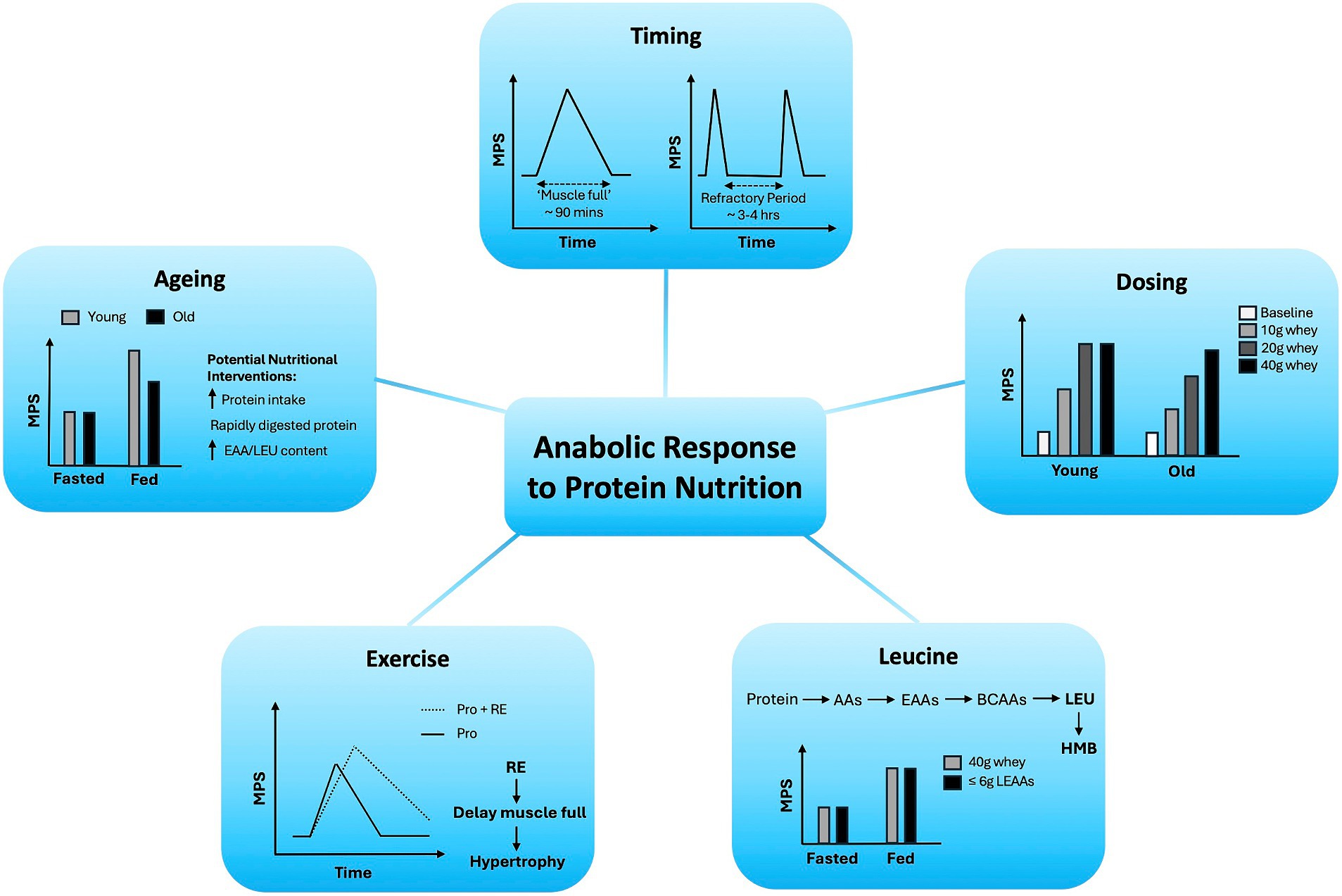In this study, it was reported that 100 g protein feeding stimulated greater increases in post-exercise MPS [muscle protein synthesis] rates than 25 g protein over a 12 h post-exercise period. These findings contrast with previous research showing that post-exercise MPS rates are maximally stimulated with approximately 20 g of protein, with no further increase in MPS with 40 g protein (45, 95). One potential explanation for the differences in these findings could be the type of exercise employed. The study by Trommelen et al. (98) assessed MPS following whole body RE [resistance exercise], whereas the studies by Moore et al. (95) and Witard et al. (45) used leg based RE. There is some precedence for this, with previous research indicating that 40 g of protein feeding may be more effective at increasing MPS than 20 g of protein feeding following whole body RE training (99). This is likely caused by the increased demand for AAs [amino acids] following whole body compared to isolated leg-based training, with the 20 g protein dose potentially not supplying enough AAs to meet the demands of the greater number of muscles utilised in whole body RE.
https://www.frontiersin.org/journals/nutrition/articles/10.3389/fnut.2024.1419229/full
given that four 20 g protein feeds were more efficacious than two 40 g protein feeds (46), it would be surprising to see a shift in favour of an even higher dose, but less frequent protein feed. In sum, RE is a key stimulator of muscle anabolism, but the intricacies of maximising the MPS response are still debated. Repetitive protein feeding containing EAAs/leucine within the 48–72 h post-exercise period should be the primary aim of anyone pursuing muscle hypertrophy, with any additional benefits of large quantities of protein intake (> 40 g) in response to whole body RE requiring further validation.
Elevated muscle mass correlates with improved metabolic status, while fitness levels expressed as muscle strength are indicative of overall health [1,5,23].
https://www.mdpi.com/2077-0383/13/12/3400
myosin metabolic states during torpor unexpectedly led to higher levels in energy expenditure of type II, fast-twitch muscle fibers at ambient lab temperatures (20 °C). Upon repeating loaded Mant-ATP chase experiments at 8 °C (near the body temperature of torpid animals), we found that myosin ATP consumption in type II muscle fibers was reduced by 77–107% during torpor compared to active periods. Additionally, we observed Myh2 hyper-phosphorylation during torpor in I. tridecemilineatus, which was predicted to stabilize the myosin molecule. This may act as a potential molecular mechanism mitigating myosin-associated increases in skeletal muscle energy expenditure during periods of torpor in response to cold exposure. Altogether, we demonstrate that resting myosin is altered in hibernating mammals, contributing to significant changes to the ATP consumption of skeletal muscle. Additionally, we observe that it is further altered in response to cold exposure and highlight myosin as a potentially contributor to skeletal muscle non-shivering thermogenesis.
https://elifesciences.org/articles/94616


No comments:
Post a Comment